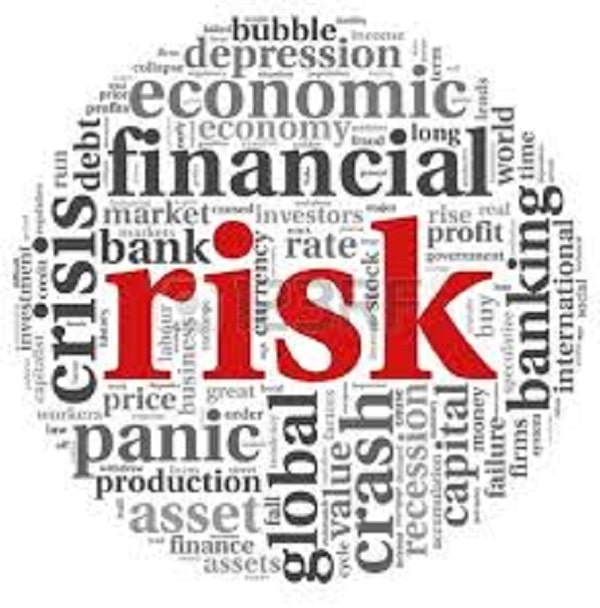What is Financial Risk Management?
Financial Risk Management is the exercise of analyzing potential risks ahead, its identification, and the provision of solutions to curb the risks. In making business plans, the ability to manage the risks soundly determines the level of profit and losses involved in the establishment.
Read More: Financial Intelligence
Importance of Financial Risk Management.
It is no doubt that the sustainability of investments or financial resources depends on the risk management factor. Financial Risk Management aids you to monitor, point out, and take charge of your capital, savings, and income. In doing this, one avoids business breakdown. Financial emergencies, management errors, legal liabilities, accidents, and natural disaster leads to financial risks, but when properly managed brings a sure guide to the organization or individual during the hard times. Financial Risk management is very prominent for an establishment to be successful. It also majors in reducing losses and escalating returns.
Types of Financial Risk Management.
Comparatively, there are different types of risks that an organization can face and the division is in three main branches. That includes:
#1. Enterprise Risk:
These are risks by businesses to increase profits and uphold quality shareholding values. For instance, some companies diversify their products into sizes or different packs to gain sales and new investors.
#2. Non-Business risks:
It Arises from a lack of control by the firm. That is, they arise from general economic imbalance or government policies.
#3. Monetary Risks:
This is connected with the losses of the organization, insufficient sales, a drop in interest rates, currencies, and loss of shareholders.
Other types of Financial Risk Management are:
#a. Market Risk:
This type of risk arises due to the movement in the prices of financial instruments. Market risk can be classified as Directional Risk and Non-Directional Risk. Movement in stock price, interest rates, and more leads to Directional risk. Non-Directional risk, on the other hand, can be volatility risks.
#b. Credit Risk:
This type of risk arises when one fails to fulfill their obligations towards their counterparties. Credit risk can be classified into Sovereign Risk and Settlement Risk. Sovereign risk usually arises due to difficult foreign exchange policies. Settlement risk, on the other hand, arises when one party makes the payment while the other party fails to fulfill the obligations.
#c. Liquidity Risk:
This type of risk arises out of an inability to execute transactions. Liquidity risk can be classified into Asset Liquidity Risk and Funding Liquidity Risk. Asset Liquidity risk arises either due to insufficient buyers or insufficient sellers against sell orders and buys orders respectively.
#d. Operational Risk:
This type of risk arises out of operational failures such as mismanagement or technical failures. Nevertheless, Operational risk can be classified into Fraud Risk and Model Risk. Fraud risk arises due to the lack of controls and Model risk arises due to incorrect model application.
#e. Legal Risk:
This type of financial risk arises out of legal constraints such as lawsuits. Whenever a company needs to face financial losses out of legal proceedings, it is a legal risk.
Financial Risk Management Process.
Financial Risk Management process is the skeleton of motions to curb financial risks. These steps are:
#1. Risk identification:
Be that as it may, this is the first step to take in Financial Risk Management. It is pertinent to know the risk associated with your operating location. Since the risks can be visible the organization can now profer solutions to deal with it both online and offline and even in terms of the report.
#2. Risk Management:
Provided a risk is identified, the depth of the risk can be determined. In this process, you point out the harshness of the risk to the business. Then you can now take steps, know if is a major or minor risk, document it, evaluate it, and map out how to curb it.
#3. Risk Ranking:
The level of risks should be classified and prioritized and also the security of risks is seen and this ranking gives the organization a whole view of the risk they are exposed to. Higher risks are ranked first before lower risks for immediate attention.
#4. Risk Treatment:
All the risks that were identified, analyze, and ranked need to be treated as soon as possible maybe by connecting with risk experts concerning the type of risk and its solution. Risk treatment involves setting up meetings with shareholders and experts needed, so everyone can see and discuss the problem and the best ways to deal with them.
#5. Risk Review and Monitoring:
In treating risks, not all risks can be solved at once so those yet to be solved around often reviewed and monitored including those risks that are always present like the market risk and environmental risks. Meanwhile, employees keep a close watch on the risks. Similarly, Risk management is a practice in all sizes of businesses. Small businesses do it informally while big ones do it formally.
#5.Financial Risk Management Techniques.
Here are some techniques involved in financial risk management:
- Risk identification: In reality, this helps pointing out the risks to which the organization is exposed to is and is the first step of the process.
- Assessment: By leveraging a mix of qualitative and quantitative techniques simultaneously, each identified risk is assessed to estimate the scale
- Prioritization: The risks are then placed in hierarchy various methods, most commonly through a map of the estimated risks against a matrix that measures likeliness and impact
- Risk Response: Businesses will then need to look at the assessment and come up with an action plan whether it may be to implement a tool or tactic
- Implementation: Above all, after coming up with an action plan to move forward with, the business would need to implement the plan and monitor its performance
#6. Examples of Financial Risk Management.
The various examples of Financial Risk Management appears in daily markets and investment processes like car loans, mortgage instalments, insurance, student loans and even when people borrow money from banks to pay back wit an interest rate or use their own money to set up a business. More practical examples are the deep thinking we do before setting up a business, diversifying our brands and when a person evaluates the organization debts, incomes and monitor his/her enterprise.
#7. Financial Risk Management Courses.
Certainly, below are some courses on financial risk management one can take for professional and business growth:
1. Statistics in business.
2. Business legislation and compliance.
3. Organizational ethics
4. Risk management process.
5. People-related management.
6. Legal risk management
7. Master class private equity.
8. Accounting and financial analysis.
#8. Financial Risk Management Certification.
You can obtain these certificates by doing Financial Risk Management courses either online or offline. However, to receive the FRM designation, candidates must successfully complete a comprehensive, two-part exam and complete two years of work experience in financial risk management. Professionals who hold the FRM designation can also participate in optional continued professional development.
Be that as it may, the certificate can make you a consultant in Financial Risk Management. Some of this includes:
- Certified in Risk and Information Systems Control (CRISC)
- Certified in the Governance of Enterprise IT (CGEIT)
- Project Management Institute-Risk Management Professional (PMI-RMP)
- Information Technology International Library (ITIL) Expert
- Certification in Risk Management Assurance (CRMA)
Read More: PRINCIPLES OF FINANCE
FAQ
How is financial risk measured?
Risk is measured by the amount of volatility, that is, the difference between actual returns and average (expected) returns. This difference is referred to as the standard deviation.Thus, the standard deviation can be used to define the expected range of investment returns.
How do you define risk in finance?
In finance, risk refers to the degree of uncertainty and/or potential financial loss inherent in an investment decision. In general, as investment risks rise, investors seek higher returns to compensate themselves for taking such risks.
What are the most used measures of risk?
Some common measures of risk include standard deviation, beta, value at risk (VaR), and conditional value at risk (CVaR).






